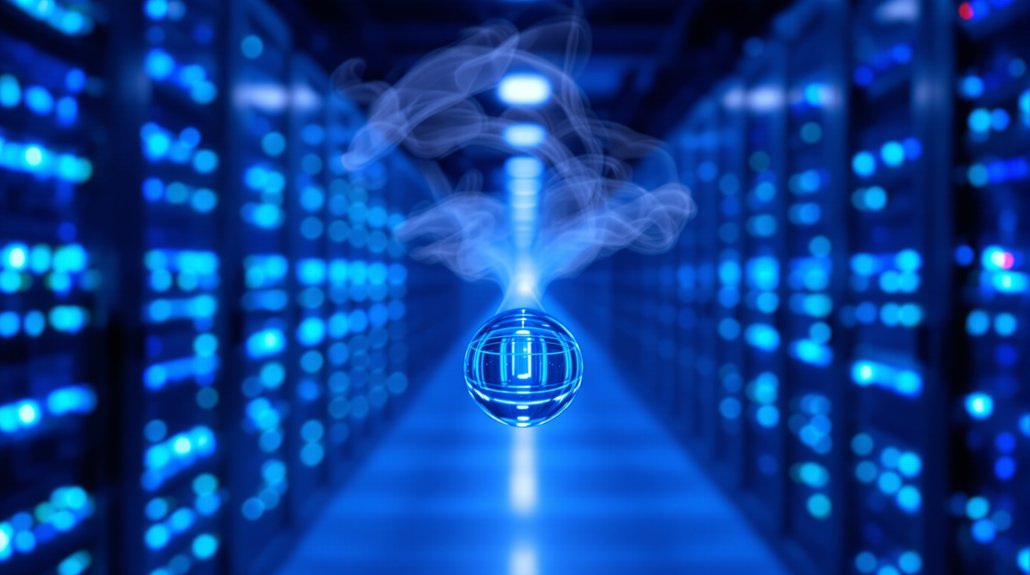Efficiency matters. As AI models like Google’s Gemini proliferate across our digital terrain, their environmental impact has come under scrutiny. Each text prompt sent to Gemini consumes approximately 0.26 milliliters of water—about five drops. Not exactly a flood, but it adds up.
AI’s environmental footprint may seem small, but five drops of water per prompt creates oceans at scale.
The energy footprint isn’t enormous either. Just 0.24 watt-hours per prompt, equivalent to watching TV for less than nine seconds. And CO₂ emissions? A measly 0.03 grams. Google’s pretty proud of these numbers, and maybe they should be.
They’ve slashed energy consumption by a factor of 33x in the last year alone. Carbon dioxide emissions dropped even more dramatically—44x reduction. Not too shabby for a company running millions of AI queries daily.
But here’s the thing about measuring environmental impact: methodology matters. Google counts everything—idle energy, cooling systems, data center overhead. The whole enchilada. Many competitors only measure active hardware usage, conveniently ignoring the rest. It’s like counting calories in your burger but ignoring the fries and milkshake.
Water usage primarily comes from cooling those massive data centers. Five drops per prompt doesn’t sound like much until you multiply it by global scale. That’s a lot of drops.
The AI boom is creating unprecedented demand for data centers. Energy-intensive, water-guzzling data centers. Google’s efficiency improvements are swimming against a rising tide of total consumption.
Is this sustainable? Google certainly wants us to think so. Their custom hardware and optimized models are constantly improving. Recent advances have allowed them to build resilient grids that better manage energy flow. But as AI becomes more ubiquitous, even five drops per prompt becomes an ocean.
The tech sector faces growing scrutiny for its environmental footprint. Google’s transparency about methodology is commendable—rare, even. But the cold, hard truth? AI thirst is real. And it’s growing. One drop at a time. The Department of Energy projects that data centers could account for 6.7% to 12% of U.S. electricity use by 2028. Alternative solutions like geothermal energy could provide reliable 24/7 power with 99% less carbon dioxide than fossil fuels.








